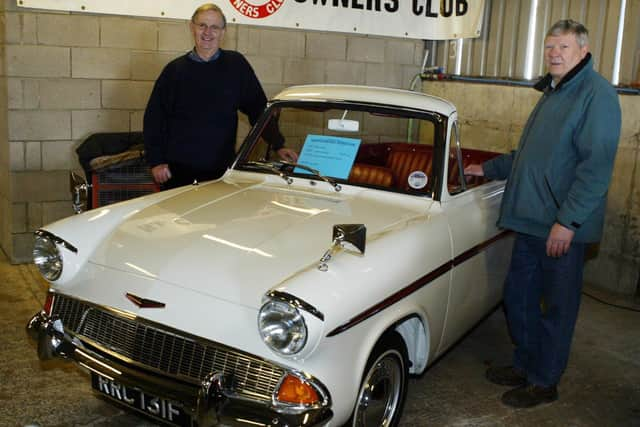BYGONE DAYS: Hereford cattle in the limelight at Balmoral spring sale


The brisk trade for the White Heads was started off by the breed champion and reserve champion making 220 guineas each.
Vern blood had dominated the pedigrees of these two “grand bulls”, which had been shown by Major Madden of Clones, Co Monaghan.
Advertisement
Hide AdAdvertisement
Hide AdBut a choice first prize Hereford bull, Cranston Signal, which was exhibited by Jervis Williamson of Culkeeran, Dungannon, Co Tyrone, made the top prize of the sale – 230 guineas.


Generally, noted Farming Life, the Herefords had produced some “excellent winners, attracted high prices to enhance their popularity among farmers in Northern Ireland”.
It had been Major Madden’s first time to exhibit Hereford bulls at the Balmoral Spring Show and Sale and he was pleased with his successes.
Farming Life’s correspondent at the show and sale remarked: “He tells me that he has six other bulls going to the Dublin sales next week and he considers two of them ‘even better’ than his Balmoral entries.”
MORE EXHIBITS FROM EIRE
Advertisement
Hide AdAdvertisement
Hide Ad

With still too few choice Hereford bulls to meet the demand in Northern Ireland, Major Madden’s success “may encourage more Eire breeders to come north”, noted Farming Life.
Before the Herefords had come into the sale ring the top price – 210 guineas – had been “held” by a choice 12-month-old Aberdeen Angus heifer, shown by J H and W H McConnell of Rathfriland, Co Down, who were prominent winners in the bull classes.
There had been a good trade for strong Aberdeen Angus crossing bulls with two selling for 190 guineas each. Mr Albert Eaton’s breed champion was withdrawn at 170 guineas, while Mr J W Leitch secured 170 guineas for his reserve champion.
Mr Veitch of Lisbellaw, Co Fermanagh, who had been one of the most successful breeders in Ulster, noted Farming Life, had a grand bull heading for the sales in Dublin, “where he will provide a strong challenge for the breed championship”.
Advertisement
Hide AdAdvertisement
Hide Ad

Mr Samuel Williams, the well-known Coolcower, Co Cork, breeder, who judged the Aberdeen Angus was impressed “with the quality of the tops”. He said that he had found a big improvement since he last judged some years previously and was “agreeably surprised” that there was not a bigger tail-end.
Bulls of size and substance enjoyed a good demand, but “plain” Aberdeen Angus met a slow trade. Farming Life noted: “There are too few good bulls and too many inferior types.”
Dairy Shorthorns produced some fine winners with a top price of 200 guineas for the champion. It was noted: “They were not up to the high standard of the 1961 autumn sale.”
TWO TOP ULSTER BULLS TO BE EXPORTED


Two Ulster bulls – an Aberdeen Angus and a Dairy Shorthorn – were to be exported to Argentina, reported Farming Life.
Advertisement
Hide AdAdvertisement
Hide AdThey had been purchased by Mr E M Alexander, “the well-known Scots exporter”, who also had an eye on other Northern Ireland animals. Mr Alexander, who arrived from Glasgow for the Balmoral sales, told Farming Life that he had purchased an Aberdeen Angus bull from Mr R Sproule of Omagh. The Shorthorn purchase was from the herd of Mr Duncan Stewart of Templereagh, Stewartstown, Co Tyrone. Mr Alexander told Farming Life: “We are prepared to pay a good price for a good bull, but we are not interested in a bad one at any price. It just costs the same to ship a good one as a bad one.”
Comment Guidelines
National World encourages reader discussion on our stories. User feedback, insights and back-and-forth exchanges add a rich layer of context to reporting. Please review our Community Guidelines before commenting.